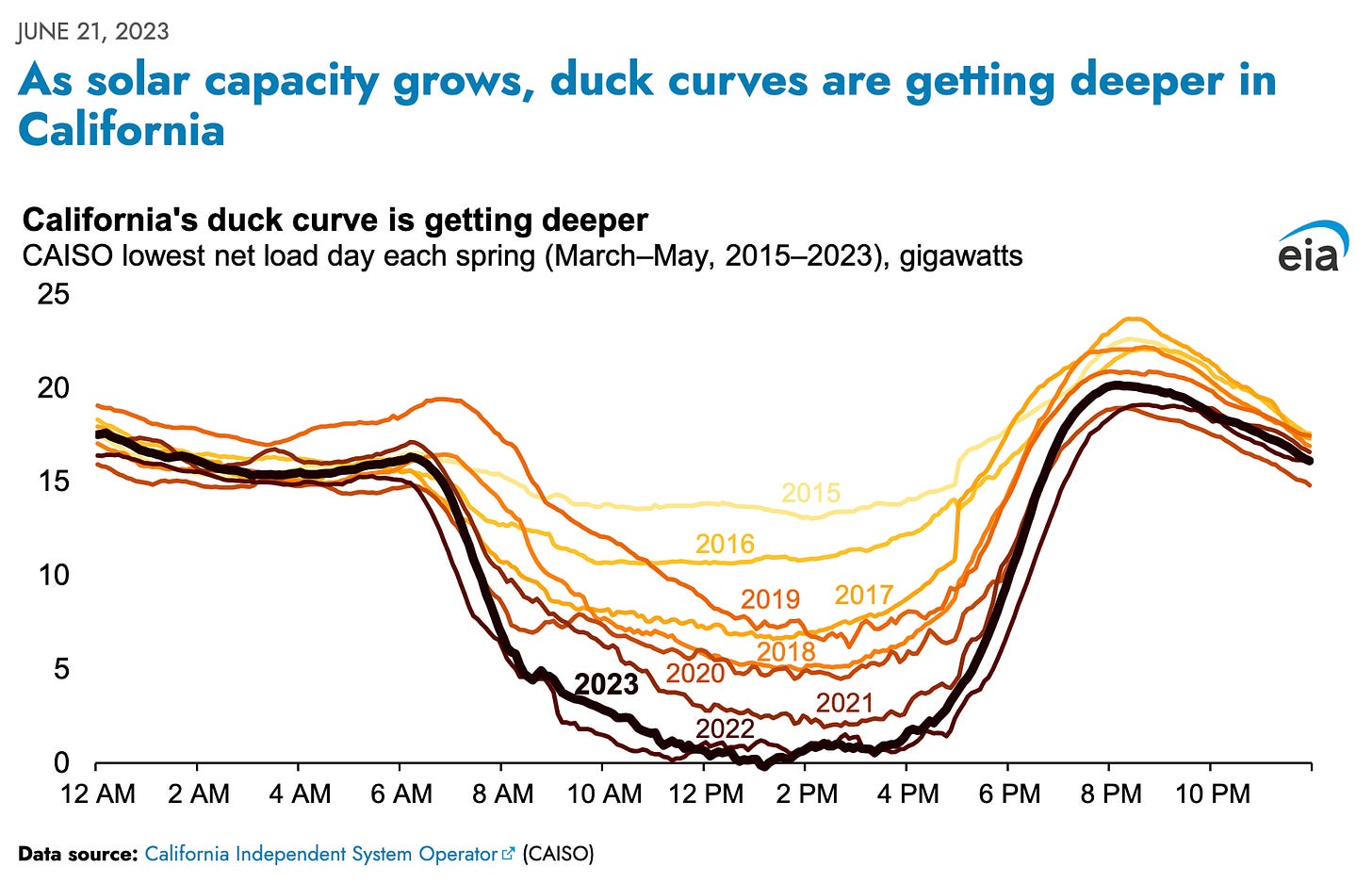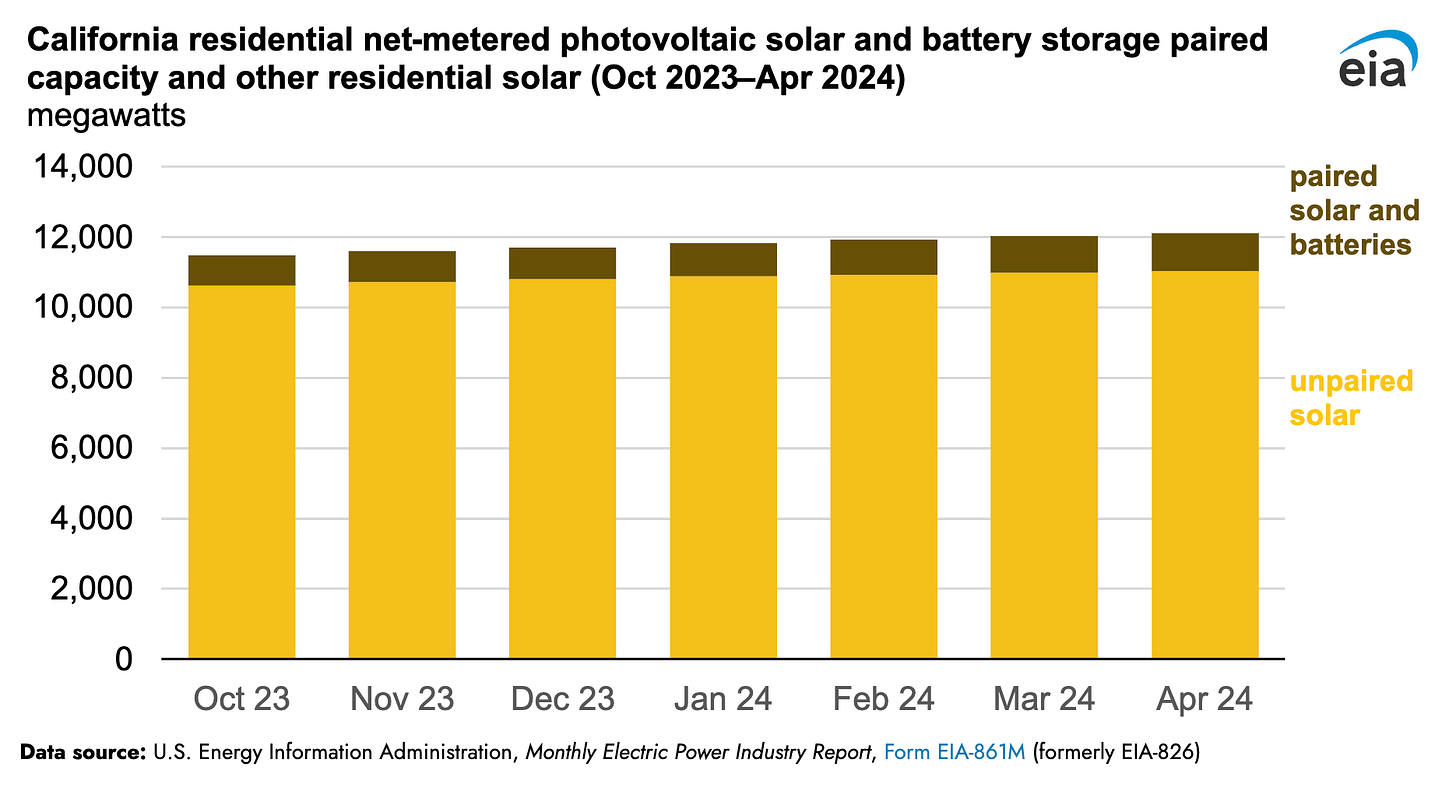The electricity industry is undergoing an unprecedented transformation characterized by smaller-scale, decentralized, and digital technologies.
But transitions are rarely easy. Significant challenges arise as the rapid pace of technological innovation exceeds the slower-moving evolution of regulatory institutions, creating what is known as the “pacing problem”. California, with its aggressive renewable energy policies and ambitious decarbonization goals, presents a case study of this phenomenon.
In my recent article, “The Pacing Problem: Using the IAD Framework to Model Technological and Institutional Change in a Regulated Industry,” (Journal of Political Institutions and Political Economy 2024), I applied Elinor Ostrom’s Institutional Analysis and Development (IAD) framework to explore the dynamics of this pacing problem. Recognized with a Nobel Prize for her pioneering work in institutional economics, Ostrom developed the IAD framework to analyze the complex interplay among institutions, technology, and human behavior. Ostrom’s insights into governance, collective action, and adaptive management offer a valuable analytical lens for examining and addressing regulatory challenges in the electricity sector.
The IAD framework provides a comprehensive method for examining the interactions among individuals, institutions, and the broader environment within a given action arena.Central to the IAD framework is the concept of the “action situation,” which focuses on the social space where individuals interact, exchange goods and services, solve problems, or engage in collective decision-making.The framework identifies key components influencing these interactions: participants, positions, actions, information, control, net costs and benefits, and potential outcomes. By analyzing these elements, the IAD framework facilitates an understanding of how institutional arrangements shape human behavior and how feedback mechanisms within these systems can lead to institutional evolution over time.This analytical approach is particularly valuable in contexts where technological advancements outpace regulatory adaptations, as it illuminates the complexities of institutional change and the necessity for adaptive governance structures.
The pacing problem is particularly pronounced in the electricity industry due to its complexity, its critical role in society, and its dense regulatory environment. Historically, large, centralized power plants and extensive analog infrastructure underpinned the vertically-integrated utility model. Utilities operated as regulated monopolies under rate-of-return regulation, ensuring reliability, safety, and affordability through substantial infrastructure investments approved by regulators. However, today’s emerging technologies—including solar photovoltaics (PV), battery storage, electric vehicles, and digital grid management tools—are reshaping the industry’s architecture. These technologies enable distributed generation, more active consumer participation, and a more resilient, flexible grid.
The “duck curve” in California is a manifestation of the pacing problem. Named for its distinctive shape—representing midday dips in net electricity demand due to abundant solar generation, followed by steep evening demand ramps—the duck curve illustrates the operational and financial challenges associated with integrating high levels of intermittent renewable energy. Solar generation peaks midday, reducing demand for traditional electricity sources, but as solar generation declines in the evening, utilities must quickly ramp up conventional plants, often at significant cost.

California’s regulatory responses, particularly changes to net energy metering (NEM) policies, demonstrate institutional adaptations attempting to mitigate the duck curve’s impacts. Initially, California’s NEM 1.0 policy incentivized solar adoption by compensating residential solar PV owners at full retail rates for surplus electricity exported to the grid. This policy, intended to accelerate solar adoption, unintentionally exacerbated the duck curve by increasing midday solar oversupply.
Recognizing these challenges, California evolved its institutional framework, introducing NEM 2.0 in 2016 and later the Net Billing Tariff in 2022 (NBT or NEM 3.0). These policies aimed to align solar incentives better with grid operational needs, introducing time-of-use (TOU) pricing to encourage solar exports and energy consumption patterns that better match grid demands. NEM 2.0 reduced cost-shifting issues by including non-bypassable charges, ensuring all customers contribute fairly to grid maintenance costs. And still the duck curve deepened through 2022. NBT then revised compensation structures significantly, aligning solar export rates with utility avoided costs rather than retail rates, which reduced financial incentives sharply for standalone solar while enhancing incentives for solar-plus-storage systems. This institutional evolution reflects feedback mechanisms identified within Ostrom’s IAD framework, where ongoing adaptation occurs in response to observed technological impacts and policy outcomes.
California’s transition from NEM 2.0 to NEM 3.0 has been marked by significant controversy and debate. Critics argue that the new tariff structure disproportionately reduces compensation for solar customers, potentially discouraging solar adoption and adversely impacting the state’s renewable energy goals. For instance, following the implementation of NEM 3.0, California’s rooftop solar industry experienced substantial job losses, highlighting the policy’s immediate economic impact. Additionally, the California Supreme Court has agreed to review a lawsuit challenging NEM 3.0, underscoring the contentious nature of the policy change. Conversely, proponents contend that the revised tariff corrects previous cost-shifting issues, ensuring a more equitable distribution of grid maintenance expenses among all utility customers. They argue that NEM 3.0 addresses the financial burden non-solar customers bore under earlier net metering policies by aligning compensation more closely with the actual value of solar energy exports. This debate highlights the complex interplay between technological innovation, economic interests, and regulatory frameworks, emphasizing the need for policies that balance promoting renewable energy adoption with maintaining grid reliability and fairness.
In the year following the implementation of NBT/NEM 3.0, the California residential solar market has experienced notable shifts. A study by Lawrence Berkeley National Laboratory observed that while the total number of installations remained comparable to the previous year, the majority were projects grandfathered under NEM 2.0, with a significant decline in new applications under NEM 3.0. Another change has been a marked increase in the pairing of battery storage systems with new solar installations, as customers seek to maximize the value of their solar investments under the new tariff structure. And notice that in the duck curve graphic above, the 2023 duck curve was shallower than 2022’s, reflecting the beneficial complementarity of storage with solar. These trends show the evolving dynamics of California’s solar market in response to changing regulatory policies.

California’s experience with NEM policy evolution underscores the critical importance of flexible, adaptive regulatory frameworks capable of keeping pace with rapid technological advancements. Ostrom’s IAD framework helps us better understand the interdependencies and feedback mechanisms at play, enabling the crafting of more responsive and sustainable policies. The ongoing adjustments to net metering policies in California reflect an iterative process essential for institutional adaptation, highlighting the necessity for continuous learning and flexibility in governance to effectively manage the complexities of technological change.
California’s adjustments to its net metering policies are ongoing and indicative of the iterative process essential for institutional adaptation. As solar PV and battery storage technologies continue to evolve, further institutional refinements will undoubtedly be necessary. Ostrom’s insights encourage policymakers to remain flexible and open to continuous learning, experimentation, and adaptation.
Addressing the pacing problem effectively requires recognizing that institutions, technology, and consumer behavior evolve together. Effective governance in the electricity industry necessitates institutional arrangements capable of responding dynamically to technological change, consumer preferences, and policy objectives.
Elinor Ostrom’s work is indispensable for understanding these institutional dynamics. Her approach emphasizes the critical role of feedback loops, the complexity of human decision-making, and the need for adaptive governance mechanisms capable of responding effectively to rapid technological change. Ostrom advocated for self-governance, local knowledge integration, and iterative policy experimentation—principles essential for designing more adaptable regulatory institutions in evolving power systems.
The duck curve phenomenon highlights how existing regulatory structures, designed for a past technological paradigm, become maladaptive when confronted with emerging energy technologies. By employing Ostrom’s IAD framework, policymakers and regulators can better understand the interdependencies and feedback mechanisms at play, enabling them to craft more responsive, effective, and sustainable policies.
This article was originally posted on Lynne’s Substack, Knowledge Problem. If you enjoyed this piece, please consider subscribing here.